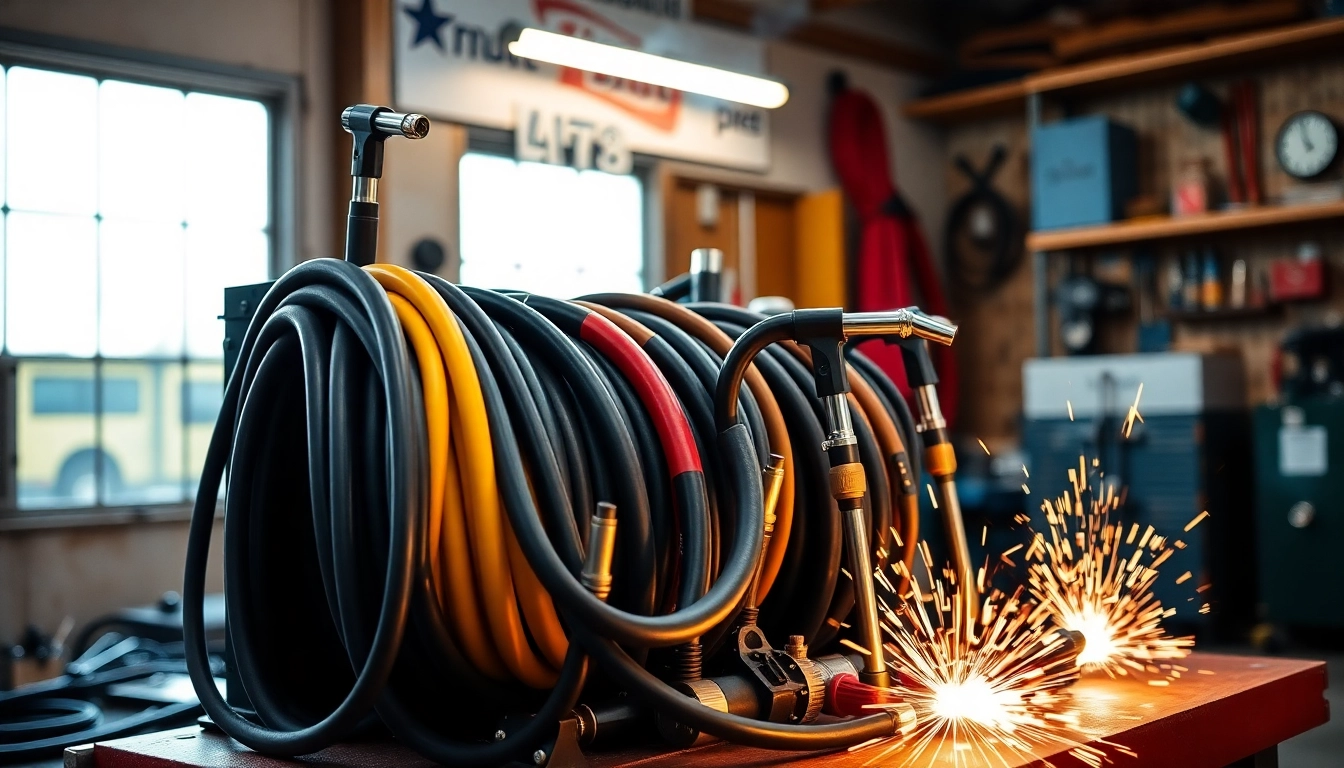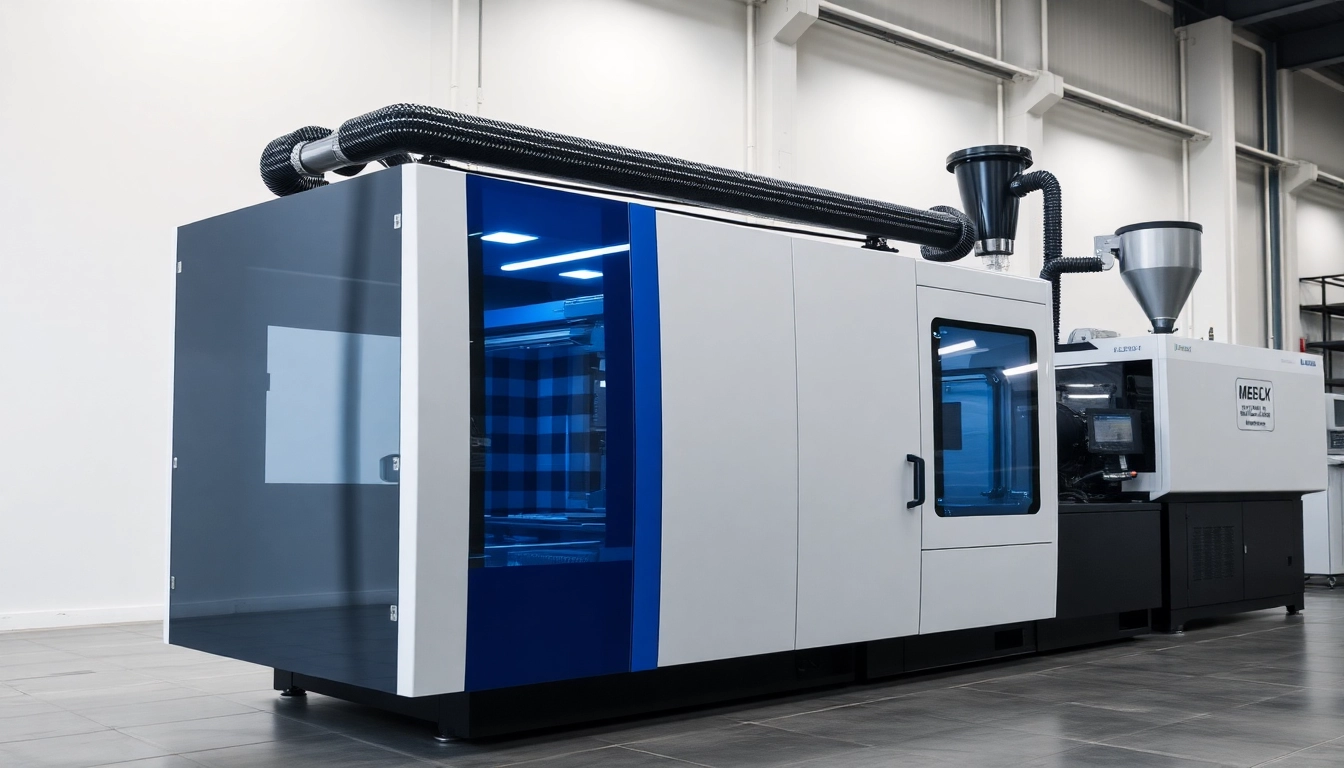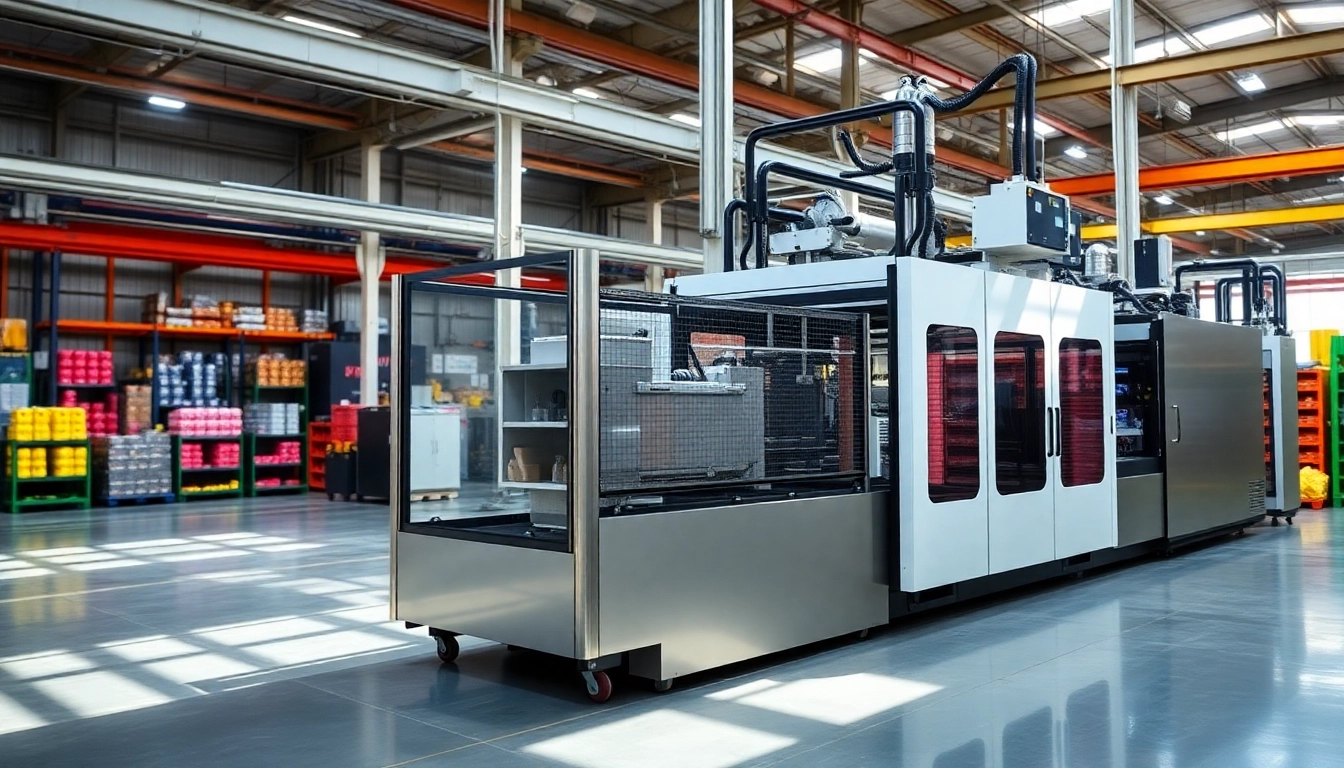
Understanding Oxy Gas Welding Kits
What is an Oxy Gas Welding Kit?
An oxy gas welding kit is a crucial apparatus for any welding enthusiast or professional. It combines both oxygen and acetylene gases which, when ignited, create a high-temperature flame capable of melting metals. This method, known as oxy-fuel welding, not only allows for welding but also cutting, brazing, and heating various materials, making it versatile for industrial applications and DIY projects alike. Commonly used in workshops and fabrication facilities, oxy gas welding kits have become synonymous with metalworking due to their effectiveness and ease of use.
Components of an Oxy Gas Welding Kit
An oxy gas welding kit typically consists of several essential components, each designed to safely and effectively facilitate the welding process. Here are the primary parts:
- Oxygen Cylinder: This cylinder stores pure oxygen under high pressure, which is essential for supporting combustion.
- Acetylene Cylinder: Similar to the oxygen cylinder, this one holds acetylene gas, a highly flammable fuel.
- Regulators: These attached devices control the gas pressure flowing from the cylinders to the torch, ensuring a steady supply and safe operation.
- Welding Torch: The heart of the kit, it mixes oxygen and acetylene at the tip to produce a flame used to melt the metal during welding.
- Hoses: Flexible tubing that connects the gas cylinders to the torch, made from durable materials to withstand high pressures.
- Cutting Attachments and Tips: Additional tools for cutting and shaping metal, depending on the kit’s complexity.
- Safety Equipment: Including goggles, gloves, and aprons to protect the user from heat and sparks.
How Oxy Gas Welding Works
The process of oxy gas welding involves a chemical reaction that occurs when acetylene mixes with oxygen and is ignited. The flame produced can reach temperatures of approximately 3,500 degrees Celsius (6,332 degrees Fahrenheit). Here’s a brief overview of the welding process:
- Prepare the Materials: Begin by cleaning the metal surfaces to ensure a proper weld, removing any rust, paint, or oily residues.
- Set the Equipment: Connect the oxygen and acetylene tanks to the regulators, then secure the hoses to the torch.
- Adjust the Gas Flow: Open the fuel valves slowly on the torch to ignite the acetylene (using a spark lighter) before gradually introducing oxygen until you achieve the desired flame type—neutral, oxidizing, or carburizing.
- Start Welding: Move the torch along the joint of the metals, maintaining a constant distance and speed for uniform heating.
Choosing the Right Oxy Gas Welding Kit
Factors to Consider When Selecting a Kit
When selecting an oxy gas welding kit, it’s essential to consider several factors to ensure you choose the right one suitable for your needs. Here are some key aspects to evaluate:
- Welding Volume: Determine how often and what type of welding you will be doing. Casual hobbyists may require a smaller, lighter kit, while professionals might need heavy-duty equipment for extensive projects.
- Portability: If you plan to transport the kit often, look for compact models that offer easy mobility without compromising essential features.
- Tank Size: Larger tanks allow longer usage times which are beneficial for extensive projects. However, heavier tanks may not be suitable for all users.
- Brand Reputation: Research and opt for reputable brands known for quality, safety, and customer support.
- Regulators and Accessories: Ensure that the kit includes reliable regulators and the necessary accessories for your intended applications.
Top Oxy Gas Welding Kits Reviewed
The market offers various oxy gas welding kits catering to different needs and budgets. Here’s a look at some highly recommended options:
- UNIMIG Oxygen & Acetylene Gas Kit: A versatile kit suitable for both beginners and experienced welders, it includes quality regulators and a durable welding torch.
- Harris 601 Oxygen and Acetylene Kit: Known for its reliability and performance, this kit includes various tips for different welding and cutting tasks.
- Victor G150 Portable Oxy-Acetylene Torch Kit: Ideal for portable use, this compact kit provides excellent cutting and welding capabilities with a range of nozzle options.
- Welders Supply 62 Gas/Oxy Acetylene Torch Kit: An all-in-one solution providing excellent value, which comes with a dedicated carrying case and additional accessories.
Understanding Price Variations
The cost of oxy gas welding kits can vary significantly based on factors such as brand, components, and included accessories. Here’s a breakdown:
- Entry-Level Kits: Typically priced between $100-$300, they cater to hobbyists or those who will not use the kit extensively.
- Mid-Range Kits: Ranging from $300-$600, these kits feature higher-quality components and are suitable for frequent users.
- Professional Kits: Priced above $600, these kits often come with advanced features and are designed for heavy-duty applications in professional settings.
Best Practices for Using Your Oxy Gas Welding Kit
Safety Precautions to Follow
Safety is paramount when using an oxy gas welding kit. Here are some essential safety precautions to ensure a safe working environment:
- Work in a Well-Ventilated Area: Ensure adequate ventilation to avoid the accumulation of hazardous fumes.
- Wear Protective Gear: Utilize goggles, gloves, and fire-resistant clothing to protect against sparks and intense heat.
- Check Equipment: Regularly inspect hoses and connections for leaks, wear, or damage before each use.
- Keep Flammable Materials Away: Maintain a safe distance from flammable objects and ensure a fire extinguisher is accessible.
- Understand the Setup: Familiarize yourself with the equipment’s operation and function before starting any welding task.
Techniques for Effective Welding
Welding requires practice and precision. Here are some techniques to enhance your welding skills:
- Establish Correct Flame Settings: Adjust your flame to a neutral setting for welding purposes to avoid unwanted oxidation.
- Maintain a Steady Hand: Control the torch at a consistent distance from the metal and ensure a smooth motion to create even welds.
- Practice Different Angles: Experiment with torch angles and distances to become familiar with variations and potential outcomes.
- Use Filler Rods Wisely: Understand when to add a filler rod for different metals and thicknesses to achieve strong, cohesive joints.
Maintenance Tips for Longevity
To ensure the longevity and efficiency of your oxy gas welding kit, regular maintenance is essential:
- Store Properly: Keep cylinders upright in a secure place, away from heat or potential impacts.
- Inspect Regularly: Check for wear on hoses and fittings, replacing any damaged items immediately.
- Clean the Torch: After use, clean the welding torch and nozzles to prevent clogging and ensure functionality.
- Follow Manufacturer Guidelines: Adhere to usage and storage instructions provided by the manufacturer to maintain warranty coverage.
Common Challenges with Oxy Gas Welding Kits
Common Issues and How to Solve Them
Even experienced welders encounter challenges with oxy gas welding. Here are some common issues and their solutions:
- Flame Issues: If the flame is unstable, check the gas supply and ensure tight connections at all points.
- Inconsistent Weld Quality: Adjust the speed of your movements and re-evaluate the heat settings to produce cleaner joins.
- Burning Through Material: Use a lower flame setting or increase travel speed to avoid over-penetration of the material.
When to Seek Professional Help
Some issues may require professional assistance. Consider seeking help if you experience:
- Persistent gas leaks that are undetectable to you.
- Malfunctioning or damaged equipment that poses a danger during use.
- Unfamiliar types of welding that require advanced expertise.
Forum Insights from Fellow Welders
Many experienced welders share their best practices and solutions in forums. Engaging in these communities can be beneficial for advice on specific issues or to learn new techniques. Recommendations are often based on personal experiences, which can help guide troubleshooting and improve your skills.
The Future of Oxy Gas Welding Technology
Advancements in Welding Equipment
The field of welding is evolving with new technologies that enhance quality and safety. Innovations in the design of regulators, safety equipment, and torch technology are making oxy gas welding more efficient. Automated welding systems are also gaining traction, allowing for precision and speed that can significantly improve production times.
Comparative Overview with Other Welding Methods
Oxy gas welding has been a traditional preferred method due to its simplicity and versatility. However, other methods like MIG (Metal Inert Gas) and TIG (Tungsten Inert Gas) welding are now popular for their efficiency and precision in specific applications. Each method has its advantages, such as speed, material compatibility, and ease of use, making it essential for welders to choose wisely based on their project requirements.
Industry Trends and Predictions
As we advance, industry experts predict an increased emphasis on portability and ease of use in welding technology. The rising integration of smart technology, including sensors and digital interfaces, is expected to streamline welding processes, making it accessible for users of all skill levels. The trend toward sustainability is also influencing welding techniques and materials, with an increased focus on green alternatives that reduce environmental impact.






